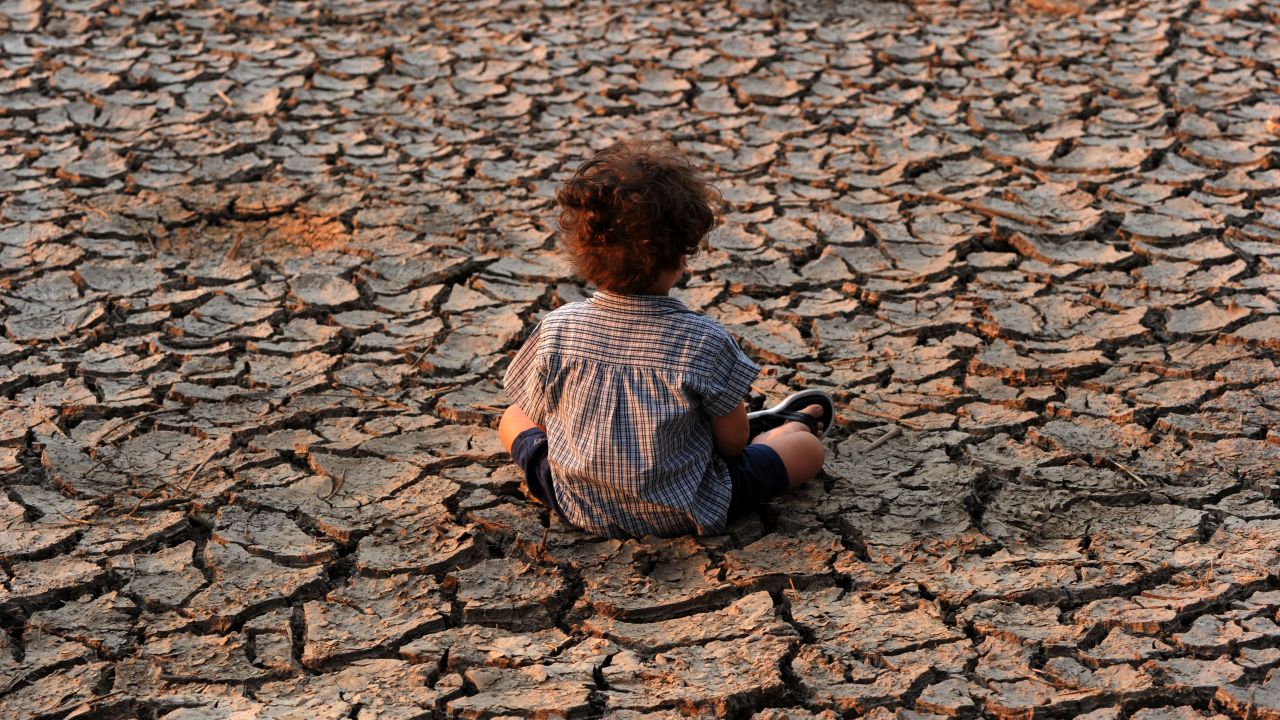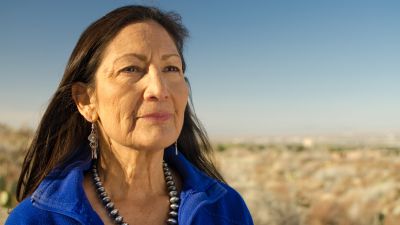
A child in an area affected by a drought in the southern outskirts of Tegucigalpa on April 22, 2016. (Photo by Orlando Sierra/AFP/Getty Images)
This post originally appeared at Environmental Health News.
Editor’s note: The following opinion piece written for EHN accompanies Perera’s commentary on fossil fuels and children’s health published June 21 in the Environmental Health Perspectives journal.
Children suffer the most from fossil-fuel burning.
Fossil-fuel combustion and associated air pollution and carbon dioxide (CO2) is the root cause of much of children’s ill health today, as well as their uncertain future. There are strong scientific arguments, as well persuasive economic ones, for reducing the world’s dependence on energy generated by the burning of fossil fuels such as coal, oil, diesel and gasoline.
These include the 7 million adult deaths per year attributed to ambient air pollution, most of it from fossil-fuel burning. Less recognized is the huge and largely silent toll on children’s health and development from both air toxics and climate change.
Children, whose bodies and brains are especially vulnerable to harm as they develop in utero and in the first years of life, bear a disproportionate burden of disease from both air pollution and climate change. Exposure to toxic air pollutants released during fossil-fuel combustion contributes to low birth weight, cognitive and behavioral disorders, asthma and other respiratory illnesses. Climate change is linked to increases in heat-related disease, malnutrition, infectious disease, physical trauma, mental health issues and respiratory illnesses.
While air pollution and the adverse health impacts of climate change affect us all, they are most damaging to children, especially the developing fetus and young child and particularly those of low socioeconomic status, who often have the greatest exposures and least amount of protection.
According to the World Health Organization (WHO), one-third of the global burden of disease is caused by environmental factors and more than 40 percent of that burden is borne by children under the age of 5. Likewise, nearly 90 percent of the global burden of disease caused by climate change is borne by the youngest inhabitants of our planet, with the bulk of that burden falling on people who live in developing countries.
Children in low-income communities in the US, as well as globally, suffer most due to disproportionately high exposures to polluting sources, which are more likely to be built in or near the neighborhoods in which they live. The poor are also more likely to live in areas vulnerable to drought and flooding exacerbated by climate change.
Harm from these exposures is magnified by other factors associated with poverty, such as poor nutrition, inadequate social support and psychosocial stresses associated with poverty and racism. Even in the United States, the world’s most prosperous country, the child-poverty rate is an astounding 22 percent.
Every day that we refuse to act compounds these problems. Inaction perpetuates the health damage from toxic air pollutants and delays and reduces our ability to thwart the increasingly severe consequences of climate change. And it carries long-term consequences for each and every new child conceived.
There’s no question that reducing our dependence on fossil fuels would achieve highly significant health and economic benefits for children worldwide … Knowing this, we have a moral imperative to enact child-centered energy and climate policies. Exposure in utero and in early childhood to toxic emissions, famine, flooding and other disasters not only increases the risk for neurodevelopmental and mental-health problems, stunting, respiratory and other health problems manifest in infancy and childhood, but also for heart disease, chronic obstructive pulmonary disease and cancer in adulthood.
Finally, a growing body of evidence suggests that early-life exposures to air pollutants, nutritional deprivation and stress may impact the health of future generations, possibly by altering the regulation of genes involved in disease pathways.
Estimates of the economic costs are limited, but indicate the magnitude of potential benefits of action. The economic cost of preterm births attributable to airborne particulate matter in the US was estimated to be over $4 billion a year in 2010. The estimated monetary cost of the health impacts attributable to air pollution from existing coal plants in the US in 2010 exceeded $100 billion a year. The WHO has estimated that by 2030, the global cost of climate change from deaths and diseases (just from diarrhea, malnutrition, malaria and heat stress) will be $2 billion to $4 billion per year.
There’s no question that reducing our dependence on fossil fuels would achieve highly significant health and economic benefits for children worldwide, both immediately and well into the future — vastly improving the health and well-being of generations to come. Knowing this, we have a moral imperative to enact child-centered energy and climate policies that address the full array of physical and psychosocial stressors to which children are subjected due to fossil fuel combustion.
To do less than we can to protect them from preventable harm is nothing short of neglect. As their guardians and protectors, we must act responsibly.




